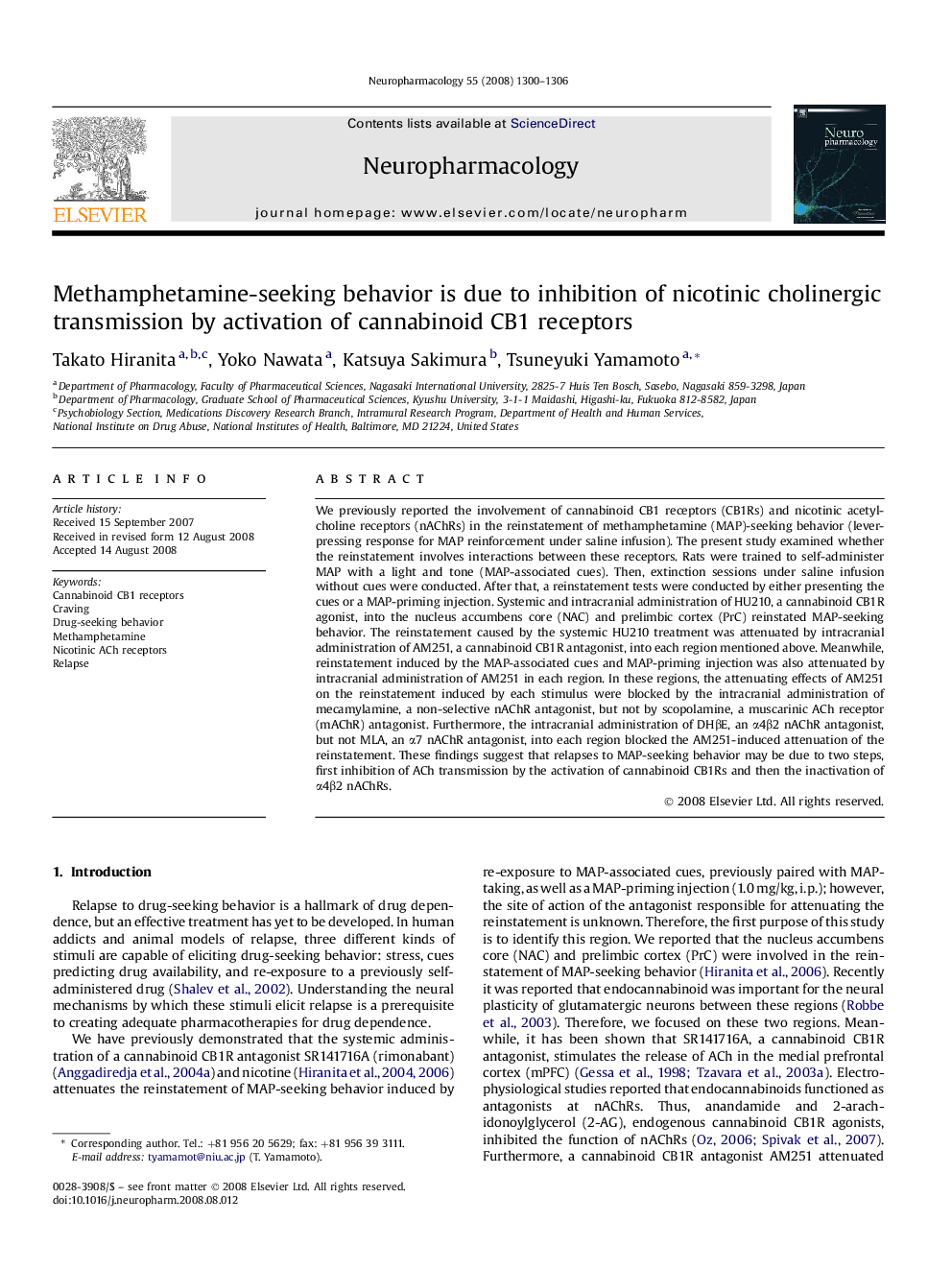| کد مقاله | کد نشریه | سال انتشار | مقاله انگلیسی | نسخه تمام متن |
|---|---|---|---|---|
| 2494456 | 1115566 | 2008 | 7 صفحه PDF | دانلود رایگان |

We previously reported the involvement of cannabinoid CB1 receptors (CB1Rs) and nicotinic acetylcholine receptors (nAChRs) in the reinstatement of methamphetamine (MAP)-seeking behavior (lever-pressing response for MAP reinforcement under saline infusion). The present study examined whether the reinstatement involves interactions between these receptors. Rats were trained to self-administer MAP with a light and tone (MAP-associated cues). Then, extinction sessions under saline infusion without cues were conducted. After that, a reinstatement tests were conducted by either presenting the cues or a MAP-priming injection. Systemic and intracranial administration of HU210, a cannabinoid CB1R agonist, into the nucleus accumbens core (NAC) and prelimbic cortex (PrC) reinstated MAP-seeking behavior. The reinstatement caused by the systemic HU210 treatment was attenuated by intracranial administration of AM251, a cannabinoid CB1R antagonist, into each region mentioned above. Meanwhile, reinstatement induced by the MAP-associated cues and MAP-priming injection was also attenuated by intracranial administration of AM251 in each region. In these regions, the attenuating effects of AM251 on the reinstatement induced by each stimulus were blocked by the intracranial administration of mecamylamine, a non-selective nAChR antagonist, but not by scopolamine, a muscarinic ACh receptor (mAChR) antagonist. Furthermore, the intracranial administration of DHβE, an α4β2 nAChR antagonist, but not MLA, an α7 nAChR antagonist, into each region blocked the AM251-induced attenuation of the reinstatement. These findings suggest that relapses to MAP-seeking behavior may be due to two steps, first inhibition of ACh transmission by the activation of cannabinoid CB1Rs and then the inactivation of α4β2 nAChRs.
Journal: Neuropharmacology - Volume 55, Issue 8, December 2008, Pages 1300–1306